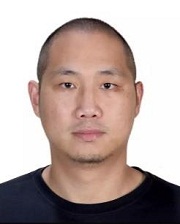
Dr. Gengxiang Wang
University of Exeter, UK
Title: Dynamic Responses Investigation of Impact Behavior in Multibody System
Abstract:
Impact behavior is ubiquitous in natural systems and multibody system dynamics. Accurately predicting the dynamic responses of the contact body and the maximum contact force plays a decisive role in mechanical design and fatigue evaluation. This prediction depends on the contact force models used to estimate the impact behavior. In general, there are two kinds of contact force model, including the continuous contact force model and quasi-static elastoplastic contact model. We established a connection between the continuous contact force model and the static elastoplastic contact model by quantifying energy dissipation during impact. Our investigation marked the first time the physical meaning of the artificial damping factor in the continuous contact force model was explained. We proposed a new elastoplastic contact force model incorporating a viscous damping factor, designed to simulate soliton wave propagation in a granular system. This new contact model proved to be more accurate than the dashpot model used in EDEM software, as the dashpot model tends to overestimate contact stiffness during elastoplastic deformation between particles. This introduces a more precise simulation strategy for the EDEM software.
Further, we have, for the first time, elucidated the reasons behind the existence of non-physical tensile regions in the contact force model with a viscous damping factor, and proposed a coefficient of restitution model that is validated by experimental data. The motion status of the contact body after impact can be corrected by introducing a coefficient to balance the energy loss during impact and eliminating the effect of the non-physical tensile force. It is revealed that the presence of these tensile regions does not significantly impact the calculation of collision behavior for dry and coarse granular materials. This is due to the phenomenon where multiple collisions between granular particles impede the contact force from entering the tensile region. Even if the contact force manages to enter the tensile region, the magnitude of the tensile force can be considered negligibly small. Our investigation not only provides a series of accurate contact force models for impact behavior in granular and mechanical systems but also reveals the reason behind the nonphysical tensile force in the viscous contact force model.
Biography:
Dr. Gengxiang Wang is currently an associate professor at Xi’an University of Architecture and Technology, China. At present, he also is the Marie Sklodowska Curie Postdoctoral Fellowship focusing on the microrobot dynamics at University of Exeter, UK. He obtained his Ph.D. degree in mechanical design and theory from the Xi’an University of Technology in 2017. From 2015 to 2017, he had a reward from China Scholarship Council to study flexible multibody system at the University of Illinois at Chicago, UAS. He experienced as an assistant professor at Xi’an University of Technology from 2017 to 2019. At the beginning of 2018, he rewarded the “Second prize of Science and Technology award of Shaanxi Province” in China. At the end of 2019, he obtained an ‘Excellent Doctoral dissertation of Shaanxi Province’ in China. Subsequently, he joined Peking University as a postdoctoral to focus on the impact mechanics at the beginning of 2020 after obtaining the Boya plan supported by Peking University (200 maximum each year).